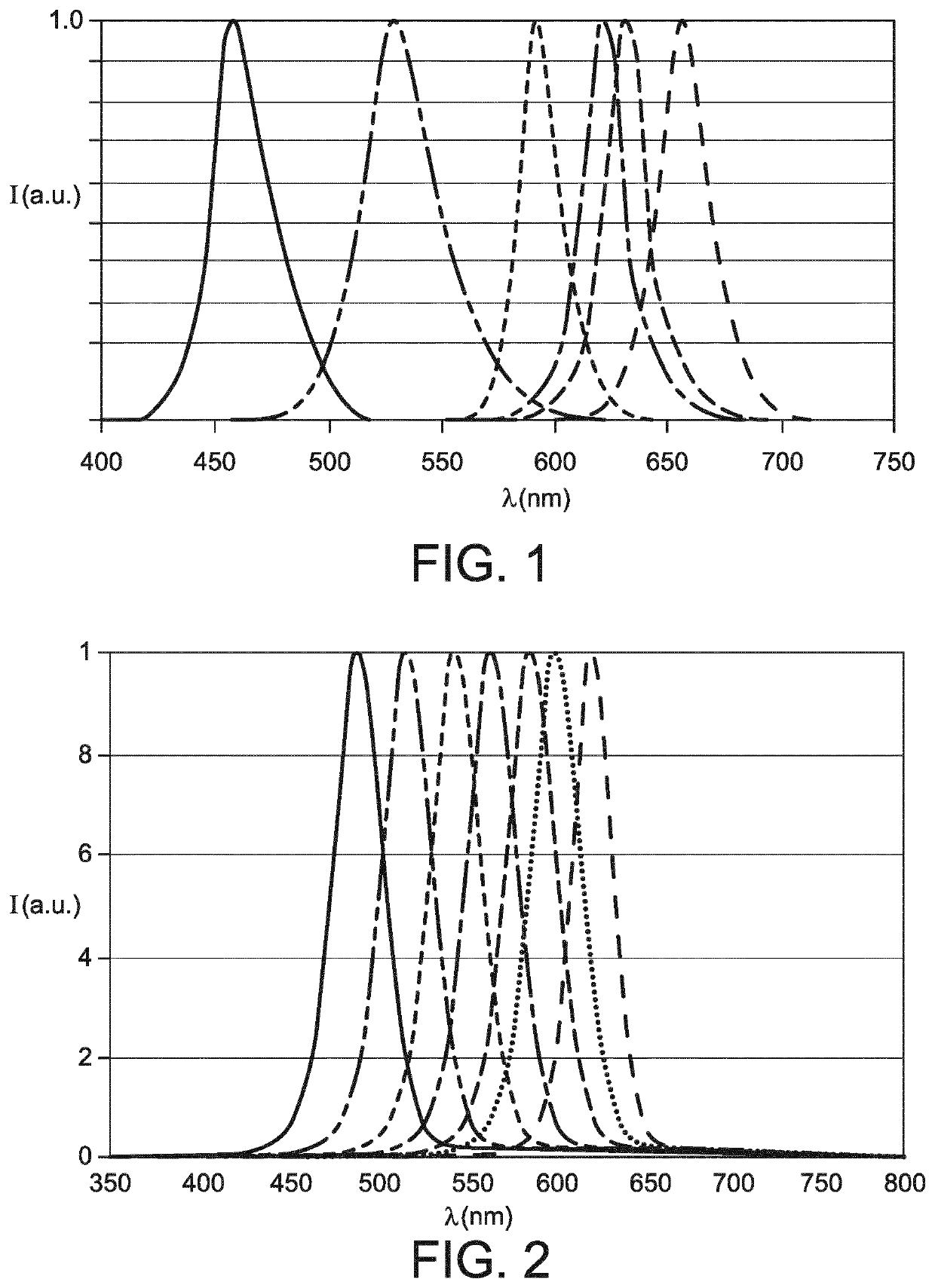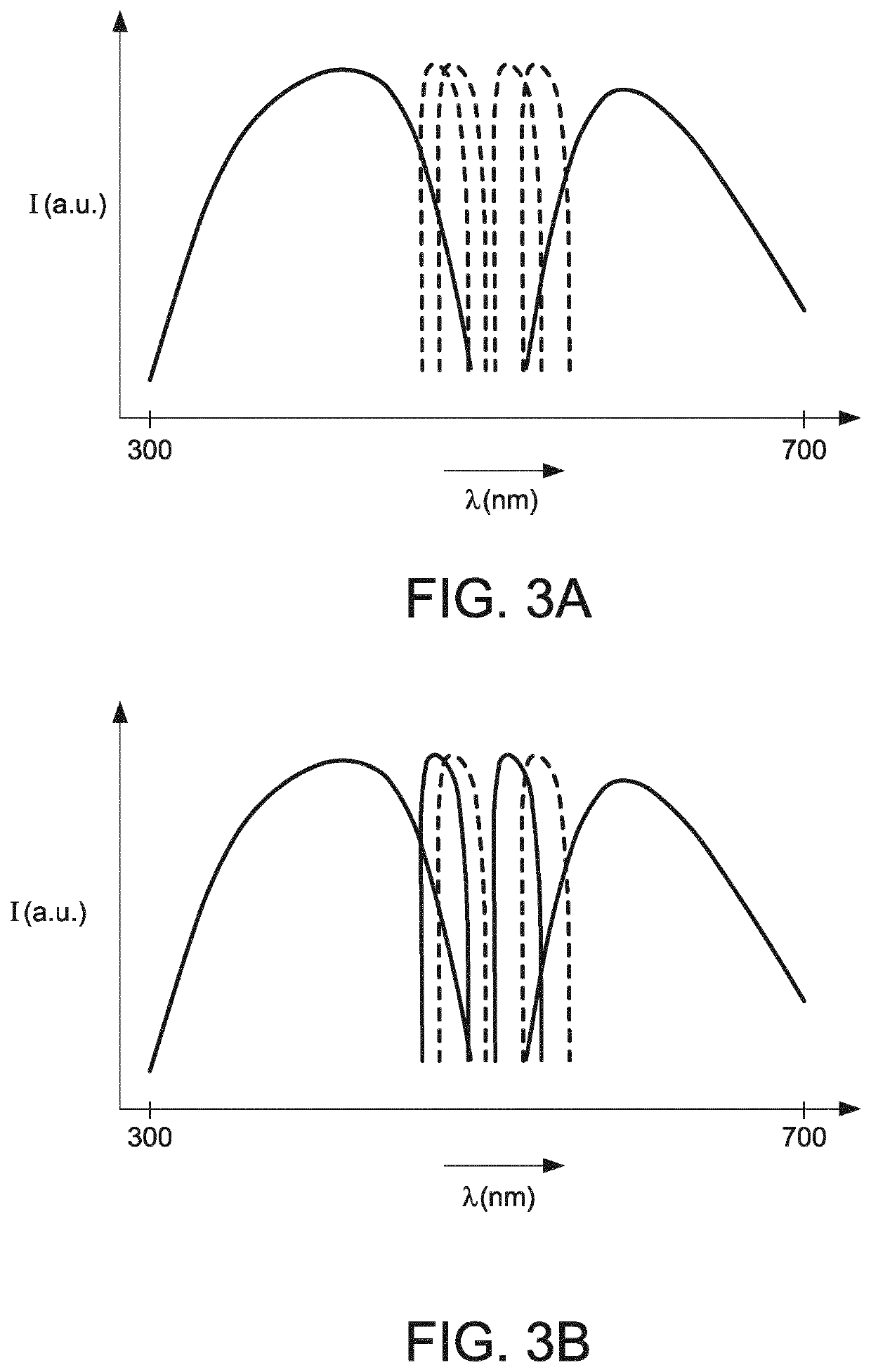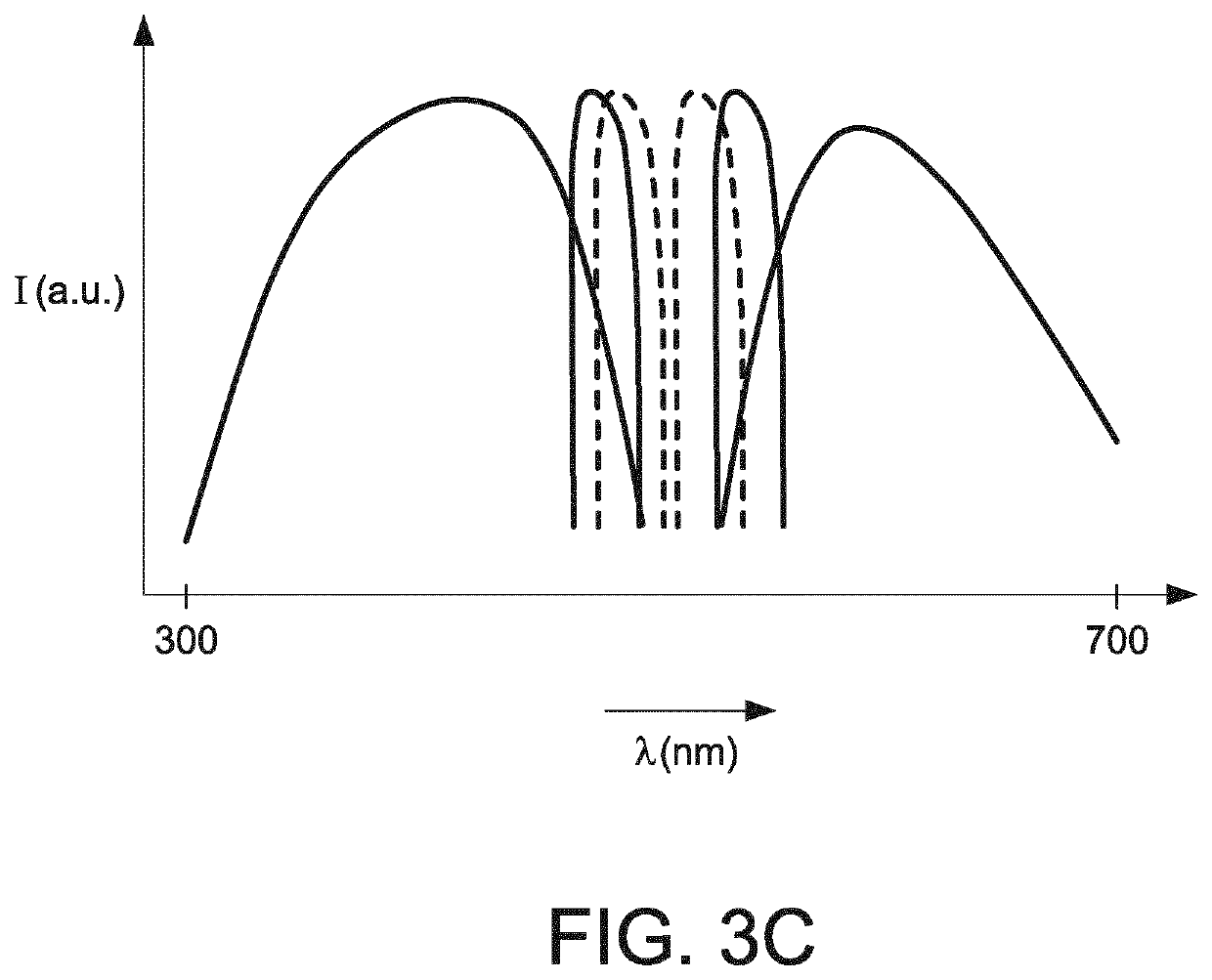Light source and method for augmenting color perception for color deficient persons
a color perception and light source technology, applied in the field of light source and method, can solve the problems of inability to distinguish between certain colors, dangerous situations, and draw possible undesired attention, and achieve the effects of reducing sensitivity to blue light, reducing sensitivity to red light, and reducing sensitivity to green ligh
- Summary
- Abstract
- Description
- Claims
- Application Information
AI Technical Summary
Benefits of technology
Problems solved by technology
Method used
Image
Examples
Embodiment Construction
[0061]The lighting system may in embodiments comprise a lighting device (or a group of lighting devices) in which the emission color spectrum is highly tunable, mainly in the wavelength segments where there is a (varying) overlap in the color bands that are causing the problem (e.g. green-red, which is the majority of color deficient cases, but also blue-yellow).
[0062]For instance, such light spectrum may be created by the use of narrow band lighting devices or narrow band phosphors, which provide narrow emission bands in the total spectrum and are addressable (can be turned on / off and steered in intensity).
[0063]The lighting system may e.g. be used in specific environments, such as e.g. the inside of a shop, a fitting room in a clothing shop that is suitable for the envisioned function. So, an environment may be chosen that offers a light setting (sufficiently dimmed light) such that the method will work.
[0064]Further, a user interface for the user / customer may be provided, allowin...
PUM
| Property | Measurement | Unit |
|---|---|---|
| spectral gap width | aaaaa | aaaaa |
| spectral gap width | aaaaa | aaaaa |
| spectral gap width | aaaaa | aaaaa |
Abstract
Description
Claims
Application Information
 Login to View More
Login to View More - R&D
- Intellectual Property
- Life Sciences
- Materials
- Tech Scout
- Unparalleled Data Quality
- Higher Quality Content
- 60% Fewer Hallucinations
Browse by: Latest US Patents, China's latest patents, Technical Efficacy Thesaurus, Application Domain, Technology Topic, Popular Technical Reports.
© 2025 PatSnap. All rights reserved.Legal|Privacy policy|Modern Slavery Act Transparency Statement|Sitemap|About US| Contact US: help@patsnap.com



